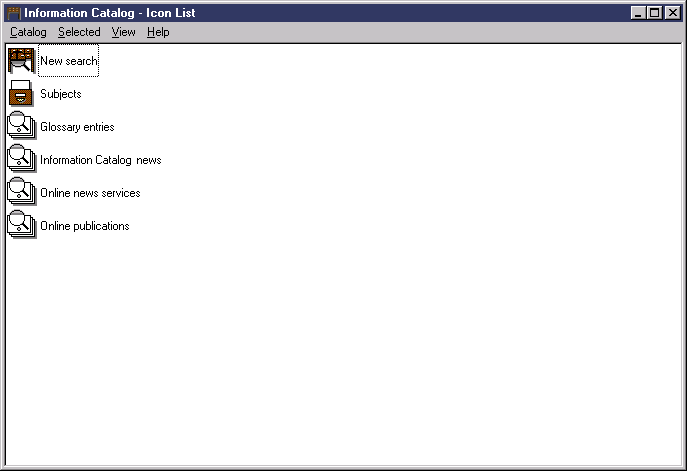
The Information Catalog Manager is a tool that helps you find and access business information quickly and easily; it does for your organization what an electronic card catalog does for a library, and more.
In today's business environment, having access to important company information is a necessity. Gathering pertinent information is often a time-consuming, exhaustive process and involves searching for data in various locations and calling several departments or individuals for pertinent information. The Information Catalog Manager streamlines the search for business information by providing a single information catalog and robust searching capability.
Your company's information is maintained in different places: charts, graphs, displays, and other information are in decision support systems; spreadsheets and tables of customer names, numbers, and other data are in accounting systems; text documents and graphic files are in office systems. The information can be on a large mainframe system, a network server, on your workstation, or in printed documents in a filing cabinet. You can catalog any or all of this information: the scope of what the information catalog contains depends on the information that can and should be shared within your company.
The Information Catalog Manager stores descriptive data about source information. This data can include the type of information, a description of the information, what it contains, who owns and updates it, and where and how to get to it.
After you find the information you need, you can start spreadsheet programs, word processors, graphic tools, or other informational applications from the Information Catalog Manager. The Information Catalog Manager remains in the background while you work with the retrieved information in the application where the source information originates.
To use the Information Catalog Manager user interface, start from the
Information Catalog window shown in figure 1.

Figure 1. Information Catalog window